The plug in combination with the socket is a quick-disconnect contact connection. Thus, almost any modern technology is connected to the network. This method is reliable, simple and convenient if all components of the system are in good working order. Otherwise, the plug in the outlet heats up or other problems arise.
Defective plug
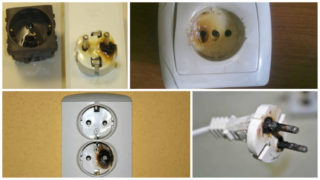
When connecting, one or more signs of malfunction may be observed: arcing, heating, melting. If at least one of them is noticed, it is necessary to make repairs, since in this situation the risk of a short circuit and fire increases. In addition, the user may receive an electric shock.
Often, only one element of the contact pair is damaged, in particular the plug. If it heats up after 5-10 minutes after turning it on, it needs to be repaired or replaced. How the problem will be solved depends on whether it is being sorted out or not. If the case is monolithic, the wire suitable for it is cut off, and a new plug is installed in place of the old plug. If the case is collapsible, it is necessary to unscrew the screw connecting its two halves, inspect the insides, eliminate the malfunction and reassemble the plug.
The reasons why the plug in the outlet heats up are reduced to a violation of the contact of the legs with the wires supplying electricity. Contact is disrupted due to such factors:
- Loose bolt that presses the exposed end of the wire against the contact leg. You need to tighten it more carefully.
- Burnt or melted wires. It is necessary to shorten the wire by cutting off the damaged section, strip the ends from the insulation again and fasten them with screws properly.
- Oxidized contacts and wires. The areas of contact can be cleaned with a knife or sandpaper to a metallic sheen, using acid for etching. If the wire is oxidized, cut it off and reassemble the connection.
After repair, the two halves of the case are tightened with a screw and check if the plug is warming up or not. If the problem persists, other causes of the problem should be considered.
In addition to physical damage to the plug, heating can be caused by improper use of the appliances. This includes:
- Insufficiently stable contact of the plug with the socket. If the diameters of the contact legs of the plug and the holes in the socket do not match, this leads to heating of the plug body. Insert the plug into the outlet and move it with a swinging motion. The presence of a backlash indicates that it is required to disassemble the socket and tighten the plates that wrap around the electrodes, or replace the socket completely.
- Using a socket to connect devices with plugs that have different electrode diameters. Gradually, the petals of the contacts loosen and grip the thin pins loosely, which is why the plug and the socket heats up with it.
If none of the above causes are identified, the outlet is most likely faulty.
Broken socket
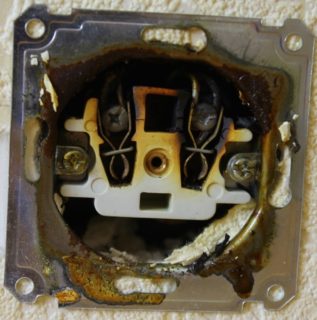
The socket is checked by connecting an electrical appliance with a working plug to it. After 5-10 minutes, check the temperature of the plug and socket cases. If they are hot, it means that the socket needs to be repaired, or it does not fit the connected device according to its characteristics.For example, the device is powerful - an electric stove or a vacuum cleaner, and the outlet is not designed for high amperage. If the case remains cold, you need to check the plug again, which heats up when connected - the reason is its breakdown or that it does not fit a specific outlet.
If the socket is broken, it must be disassembled, inspected, faulty and corrected. Possible reasons:
- The contact plate does not hold the wire well - the screw must be tightened.
- The spring-loaded contact is damaged - the spring is weakened, missing or broken - it is compressed or replaced with a new one.
- The plates that grip the electrodes are deformed - they can be bent, tightened.
- The wire inside the socket has melted - remove the damaged area, remove about a centimeter of insulation and reconnect the bare end to the clamping plate with a screw.
- The internal elements of the socket have melted - it is impossible to fix anything here, it is necessary to replace the socket with a new one.
Before carrying out work related to the repair of the outlet, it is necessary to de-energize the apartment completely or only the line that contains the faulty element.
Heating due to wiring
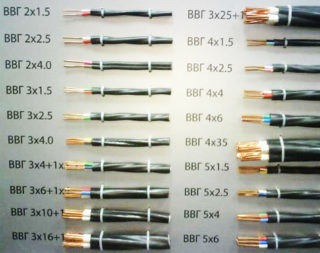
The reasons why the detachable connection heats up are more global and do not depend on the state of specific devices. For example, the electrical network may not be designed for heavy loads.
- There is a wiring in an old house, which was laid at a time when there was no need to operate a large number of powerful electrical appliances: an air conditioner, a microwave oven and others.
- The wiring was done independently, the calculations were made incorrectly.
- The wiring was laid by workers, but they were not qualified enough and made mistakes in the calculations.
In these cases, the problem cannot be solved in any other way, except by replacing the electrical wiring. It is recommended to lay a copper wire of sufficient cross-section.
The contact pair heats up if the plugs are connected through a tee - powered from one socket or inserted into an extension cord with multiple sockets - connected in series. The load in these cases is summed up, and it may exceed the permissible one.
Broken wire
The plug or socket will overheat if the wire is broken inside. At the fracture site, the minimum wire cross-section, which is not enough for the flow of a current of a given strength. The resistance increases, and as the resistance increases, heating of the electrical wiring occurs. In addition, a broken wire is accompanied by microscopic sparking. Sparks additionally heat up the damaged area.
Determination of the load using the wire size

To check the possibilities of wiring and determine the maximum load for a specific electrical network, you need to find out the cross-sectional area of the wire and perform calculations:
- First, determine the diameter of the core using a vernier caliper. The actual cross-sectional area is found by the formula: Sf. = 0.785 * D2. The measurement result is substituted for "D".
- To calculate the specific current and power, you should find the difference between the maximum and minimum values in the interval in which the calculated cross-sectional area falls. The difference in specific amperage is divided by the difference in cross-sections in the same interval, where index 1 has a lower value, and an index 2 has a larger value, namely Isp. = (I2-I1) / (S2 / S1). The value is obtained in A / mm2. Specific power is found in a similar way: Nsp. = (N2-N1) / (S2 / S1). The sought values of the current strength and power are calculated by the formulas: Iisk. = (Sph.-S1) * Isp. + I1 and Nisk. = (Sph.-S1) * Nsp. + N1.
If the calculated values are less than those indicated in the instructions for electrical appliances, the cause of heating is weak wiring.
Why is the wire heated in electrical appliances and extension cords
The heating of the wire in electrical appliances is caused by the disproportionate ratio of the cross-section of the wire and the current that flows through it. If the wire is thin and the appliance is powerful, such as an electric kettle or electric heater, the thin wires become hot. The same happens if a device with a cable of sufficient diameter is connected to an outlet using a household extension cord.
The socket on the washing machine is heating
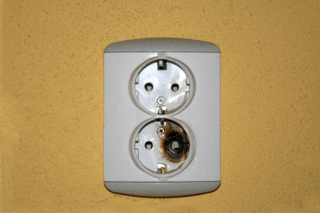
If the socket into which the washing machine is connected heats up, this phenomenon can be caused by the following reasons:
- Disproportionate power of the machine connected to the outlet - the socket case indicates the power for which it is designed. If the numbers do not match, it will inevitably cause overheating.
- Poor plug-to-socket contact is observed when a Soviet-style plug is plugged into a European socket. The electrodes of the Soviet plug are a millimeter thinner, and therefore the contact density is less.
- The outlet itself is faulty. Visually, it can be diagnosed by the presence of cracks, melted areas.
- Weak socket contact lugs. Rough use may cause the clamps to loosen.
None of these causes will go away on their own. Measures should be taken to eliminate it.
The water heater plug is heating
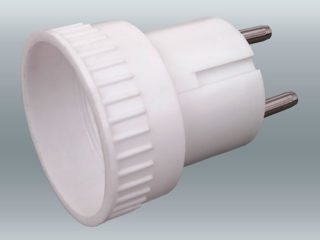
A water heater is a powerful device. A boiler, for example, has a power of 1.5 to 2.5 kW, and its amperage reaches 12 A. If the plug, socket or cable heats up so that it is impossible to touch them, the possible reasons are as follows:
- the cable has a cross section of less than 2.5 mm2;
- there is a poor contact of the plug in the socket;
- the water heater is connected via an extension cord;
- a poor-quality or old-style socket is installed.
Heating of the boiler plug is permissible, but the temperature should be within the normal range. A hot but non-scalding casing with no signs of melting is not a cause for concern.
Eliminate heating
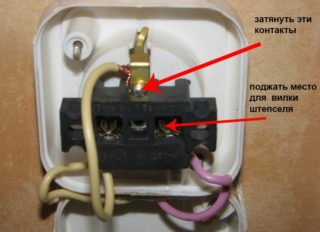
The repair of electrical appliances begins with a disconnection of the electricity supply in order to completely protect themselves from electric shock: they turn off the machine or turn out the plugs. Unscrew the screw in the central part of the socket that secures the plastic cover. An external examination of the contacts and wires is carried out. If damage is noticed, it is necessary to remove the socket from its seat by loosening the screws that hold it in place. Then you should cut the damaged wires, strip them again, place them in the terminals and clamp them carefully.
If there are traces of melting on the plastic housing around the electrode holes, it is most likely that there is poor contact between the electrodes and the contact lugs. The problem is solved by tightening the petals with pliers.
If, after the performed manipulations, the cause of heating is not eliminated, the plug of the electrical appliance is probably faulty. It is necessary to check the contacts inside it. Moreover, this is possible only if the fork is collapsible. Upon visual inspection, traces of melting of the wires inside will be noticeable. The repair consists in removing the damaged area and reconnecting the wire to the electrode with a screw. Monolithic forks cannot be disassembled.
When the outlet or plug heats up, they make immediate repair or replacement of damaged elements. It is important to prevent short circuits and fires, which occur suddenly in such situations.
To protect yourself, you must follow the rules for operating electrical appliances, do not exceed the maximum load on the network and refuse to use extension cords and tees.








